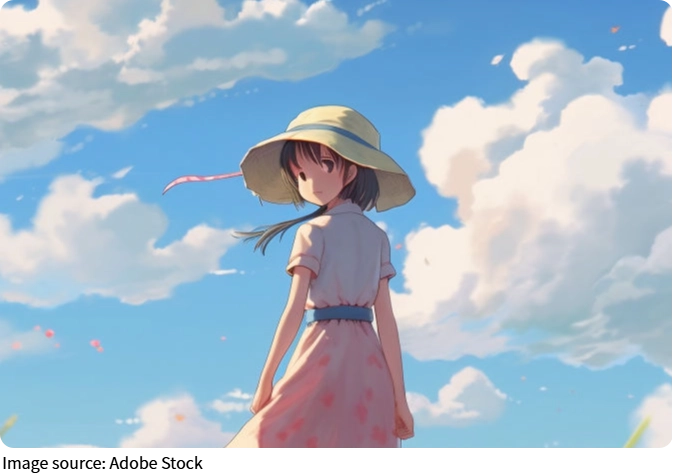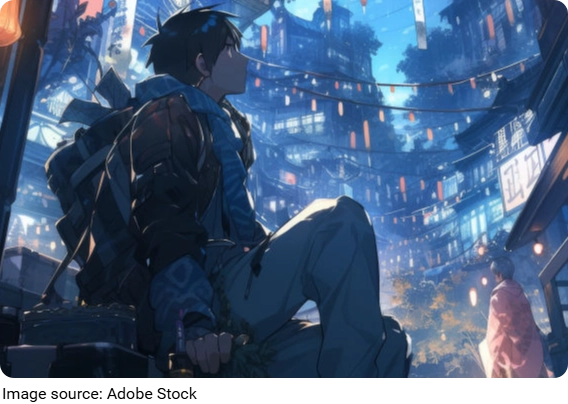AI Meets Anime

Have you noticed how anime seems to be evolving faster than ever? If you've watched a new series recently, you might have seen smoother animation, more vivid backgrounds, or even characters that feel almost life-like.
Behind this magic, artificial intelligence (AI) is playing a bigger and bigger role in how anime gets made.
Today, we'll take a close look at how AI is transforming anime production — and why this change matters for all of us who love anime.
The Traditional Anime Workflow
Before diving into AI, let's quickly review how anime has traditionally been made. For years, anime production followed a labor-intensive process:
• Artists hand-drew thousands of individual frames.
• Backgrounds were painted separately.
• Animators painstakingly timed movements and scenes.
• Editors stitched everything together in post-production.
This process took months — sometimes years — and required large teams of skilled artists. While the results were often stunning, production timelines were long and costs were high.

How AI Is Speeding Up Animation?
Now, AI is helping streamline several key parts of anime production. Let's explore a few examples.
AI-Assisted Inbetweening
One of the most time-consuming tasks in animation is inbetweening — drawing the frames between two key poses to create smooth motion. Traditionally, human animators would draw these by hand.
Today, AI can analyze two key frames and automatically generate the inbetween frames. This dramatically reduces the manual workload and helps animators focus on the more creative aspects of storytelling and design.
Enhancing Background Art
Anime is known for its stunning background art — think of those sweeping cityscapes or tranquil nature scenes. Recently, AI-powered tools can take rough sketches or even text descriptions and generate detailed, textured backgrounds in minutes.
While human artists still refine and adjust these AI-generated images, the process saves a lot of time during early production phases.
Colorization Made Smarter
Coloring each frame is another major time sink in anime production. AI tools can now auto-color line art based on style references. The AI learns a show's color palette and applies it intelligently across scenes, helping teams maintain consistency while speeding up the workflow.
Automating Lip Sync and Voice Matching
Matching mouth movements to voice acting used to require frame-by-frame manual editing. AI now assists in syncing dialogue with character lip movements more naturally and accurately. This makes dubbing into multiple languages faster and more affordable — great news for international fans!
AI in Scriptwriting and Storyboarding
AI is also starting to support pre-production. Scriptwriting assistants can suggest dialogue options, while AI-driven storyboarding tools can generate draft visual layouts based on scripts. These early drafts give creative teams a quick visual guide, helping them iterate ideas more efficiently.
Challenges and Concerns
Of course, there are still questions about how AI should be used. Some artists worry that too much AI could replace human creativity. Others raise concerns about copyright, especially if AI models are trained on existing anime styles without proper permission.
That's why many studios today are using AI as a tool to support, not replace, their creative teams. By handling repetitive tasks, AI gives human artists more freedom to focus on what makes anime special — story, emotion, and artistry.

The Future of AI in Anime
Looking ahead, AI's role in anime will likely grow even more. We can expect:
• Faster production timelines
• More personalized content (imagine AI helping generate variations of your favorite shows!)
• Interactive experiences where viewers influence story outcomes
But one thing won't change: the heart of anime will always depend on the vision of its creators. AI is here to assist — not take over.
Final Thoughts — What Do You Think?
As anime fans, we're living through an exciting time. AI is making anime more dynamic and accessible than ever. At the same time, it's important for us to appreciate and support the artists whose creativity drives this art form.
So, Lykkers — what do you think about AI's role in anime? Are you excited about the possibilities, or do you have concerns about too much automation? Let's keep the conversation going — share your thoughts with us!

 · Anime Team
· Anime Team